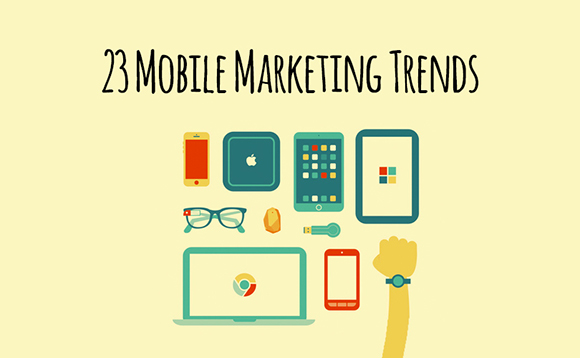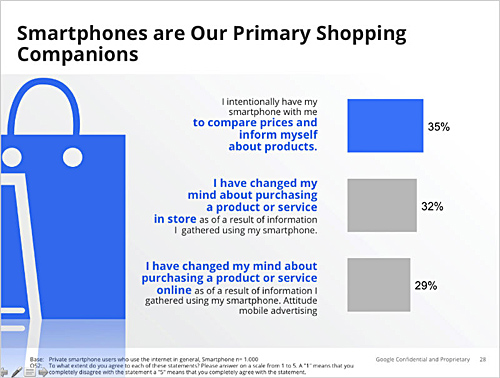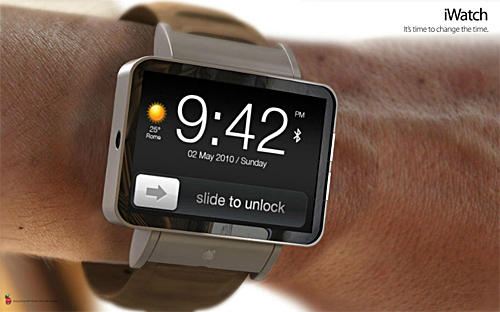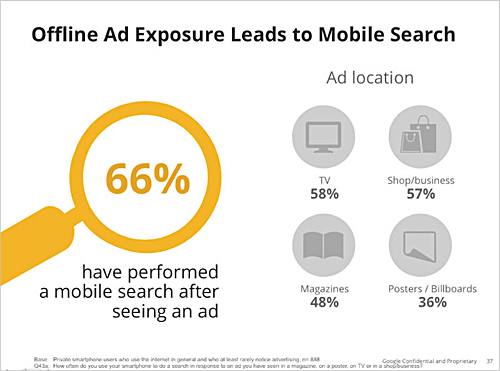Mobile Marketing Trends

Time and again we have heard that mobile will revolutionize the business world. More than 80% of mobile users carry a smartphone everywhere they go. Mobile marketing is not something you can ignore.
Google has been smart enough to develop the most popular smartphone OS and offer it for free. According to estimates Google’s mobile ad revenues will more than double in the coming years. But it’s not only Google — the mobile is on the rise everywhere and it’s not going to stop soon. That’s why in order to achieve success we need to watch emerging trends carefully.
While for most people mobile marketing only extends to designing a mobile optimized website, there’s a lot more that can be done.
But First...
Here are a some numbers which will inspire you to start taking mobile marketing seriously:
- 77% of smartphone users search the internet
- 97% of those who search the internet look for local information
- 68% of smartphone consumers use their phones to help with shopping. They use it for comparing prices, finding out more about retailers etc.
- 42% of smartphone shoppers make a purchase.
- 71% search on their phones because of an ad exposure, whether from traditional media (68%) to online ads (18%) to mobile ads (27%)
- 82% notice mobile ads, especially mobile display ads and a third notice mobile search ads
- Half of those who see a mobile ad take action, with 35% visiting a website and 42% making a purchase
Mobile Big Data and Mobile Marketing
Before talking about mobile big data, we need to understand what big data is. Big data refers to data sets that are too large and complex to manipulate with standard practices. As access to internet and use of computers is growing, amount of data generated is exploding exponentially. All this data can be used by marketers to send targeted advertising.
Usage patterns, the type of OS used, mobile apps downloaded — everything contributes to mobile big data. There are scores of services and tools available that cater specifically to obtain behavioral data from mobile app usage.

For example, Watchsend records what users do with an app. The interesting part is that it offers deeper insights into app beta tests. With Watchsend you get to know if the new features that are released are hitting home with users. The data can be used to deliver even more targeted advertising to the users or make mobile apps better.
Rich Media Messaging Services
This service enables sending messages that are rich in graphics. It also provides demographic information about the user to marketers. The important part is that messages adapt to the type of device the user has. It means that the coupons, images and videos will look good on any device be it a tablet, an Android phone running on KitKat 4.4, or the iPhone.
RMM’s conversion rates are double to that of SMS.
Personalization, Customization and Proper Timing of Messages
An SMS related to a food coupon sent at 1AM would largely go unnoticed. For obvious reasons. Marketing messages make the most impact when their timing is right. There are text marketing companies like FanMinder, Signal, TellMyCell etc. that can help you send your message at the right time.
Two-way communication is another approach that you can try. For example, Groupon send emails asking customers to buy a coupon. Bringing that approach to the mobile platform can be conclusive for growth. Avenue Stores ran a retail mobile marketing campaign where they were able to get a 6,6% ROI from sending MMS coupons and promotional content each week to customers that had opted-in.
iBeacon is a new technology by Apple that helps discover customer’s location. The technology can alert apps when they approach a location with iBeacon and also find out how close you are to, say, a retail store.
This can help you send personalized offers and deals to a customer with the perfect timing.
“The signal will show if a customer is in the electronics department, enabling retailers to send specific messages to the customer’s mobile device, such as discounts and product comparisons”, says Alex Bratton, CEO at LexTech, a company that specializes in Enterprise Application Development.
With programmatic media buying you can target mobile display networks. It combines historical intent, user profileand user behavior to send targeted advertisements. Also advertisers need not bid out in real-time as it is done by computational proxy bidding.
It will use predictive analysis based on a complex formula which involves different factors. Has the customer visited advertiser’s website in the last 30 days? What’s the weather? What’s the location? What’s the time? And more. Human programming and artificial intelligence make the targeting insanely accurate.
Wearable Technology
Wearable technology will hit us like a storm.
“iWatch” from Apple is expected to be an accessory for the iPhone and other iOS devices. The user will receive mail notifications and messages on his/her iWatch. The device will also perform biometric functions. Samsung smartwatch already enables users to make hand-free calls, check messages and capture photos. Smartphones change into things that can be worn. There’s no denying that marketing that doesn’t transform accordingly will fail.
Google Glass (which is considered to be a market pioneer), smartwatches mentioned above, devices like Jawbane UP, they all open up new opportunities for data collection. In the future we will get greater insights into how users use the products. Location targeting will be a natural feature of all such devices. The local marketing will thrive.
By 2018 this will be a market worth $8.3 billion dollars.

Improved Location Targeting
Marketers can use location patterns and create customer profiles based on their travels. This data can then be used to send offers and deals that are non-intrusive and relevant.
Android KitKat 4.4 supports location sharing through Google Maps. Apps like Foursquare help users share their location — and Facebook does that, too. Nearby Friends on Facebook app informs you about your friend’s location when they are near. It can also be used to track friends in real-time. The data submitted to this app is shared with advertisers for targeted advertising.
All of this drives a lot of traffic. It offers a more segmented market for advertisers.
There are also apps like PlaceUs with contextual intelligence in addition to location sharing. As the app learns a person’s routine, it can automatically send a message. For example, it can send a quick message for your loved ones when you are heading home. PlaceUs triggers notifications when the individual reaches a place or leaves it. And it can detect a person’s location down to a specific store in a mall. Imagine the possibilities.
Even though the information is circulated only among close-knit family members, there’s always potential that there may be apps that allow you to share this information to marketers.


